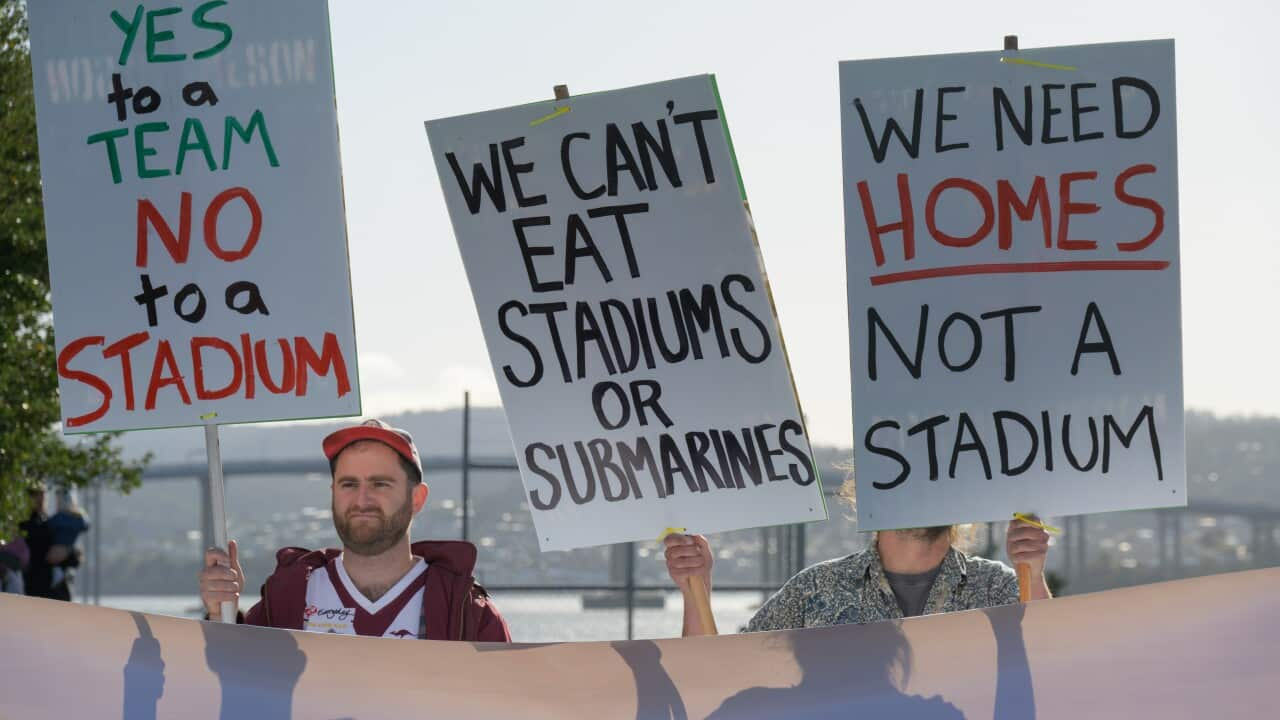Australia's retailers remain stuck in the doldrums, with no increase in consumer spending over September compounding two previous months of shrinking sales.
The weak trend is likely to weigh on economic growth in the third quarter and could cast doubts on the Reserve Bank's ability to raise interest rates in the next few months, economists said.
Retail spending totalled $25.9 billion, seasonally adjusted, in September, latest data from the Australian Bureau of Statistics showed, with the result falling short of market expectations of a 0.4 per cent increase.
The unchanged result follows revised declines of 0.5 per cent in August and 0.3 per cent in July, underlining the pressure on household spending that has been a constant worry for the RBA.
The Australian dollar dropped sharply on the news, falling from 77.14 US cents immediately before the 1130 AEDT data release to 76.85 US cents by 1430 AEDT.
For the September quarter as a whole, retail volumes were up just 0.1 per cent, but in price terms spending declined 0.4 per cent, indicating discounting over the three month period.
Friday's data indicates volumes have stalled as retailers cut prices aggressively, Westpac economist Matthew Hassan said.
"The picture from the report is an unambiguously bad one for retailers - who are cutting prices but finding no traction with volumes," he said.
"The wash-up still points to marginal downside risks to the wider consumption estimates in the third quarter national accounts."
Sector-wise, performance was mixed in September, with department stores the best performers as sales rose 2.1 per cent in seasonally adjusted terms.
Food retailing sales were up 0.6 per cent, while sales at cafes, restaurants and catering services also improved 0.3 per cent.
However, this was offset by a 0.4 per cent decline in household goods retailing, a 0.7 per cent fall in clothing, footwear and personal accessory sales and a 1.7 per cent drop in other retailers comprising of pharmaceutical, cosmetic goods, recreational goods and newspapers & periodicals.
"We can see which areas are experiencing the price deflation and the results are quite predictable," AMP Capital senior economist Diana Mousina said.
"These sectors have been experiencing strong competition, especially from overseas players and online stores for a while now."
State-wise, NSW and Queensland posted increases of 0.2 per cent and 0.3 per cent respectively.
Retail sales in Victoria remained flat, and fell sharply in NT (1.7 per cent) and WA (1.3 per cent)
The weaker-than-expected retail turnover will likely strengthen concerns that consumers are shying away from spending because of rising household debt and weak wages growth.
The retail data is in line with third quarter Consumer Price Index (CPI) and Producer Price Index (PPI) numbers published last week, which all indicate that inflationary pressures remain muted across most parts of the economy, CBA senior economist Gareth Aird said.
That could affect the timing of when the RBA starts to lift rates.
"The Reserve Bank would not want to start the process of lifting interest rates at a time when the outlook for the consumer was this uncertain, so we remain comfortable with our view




